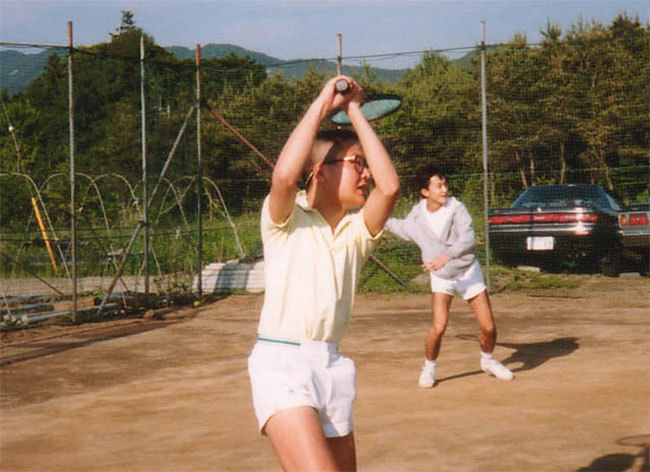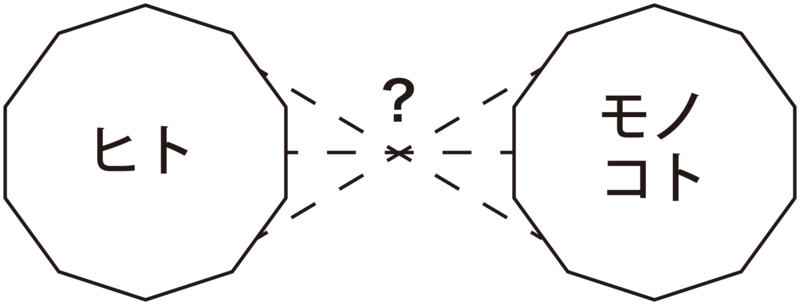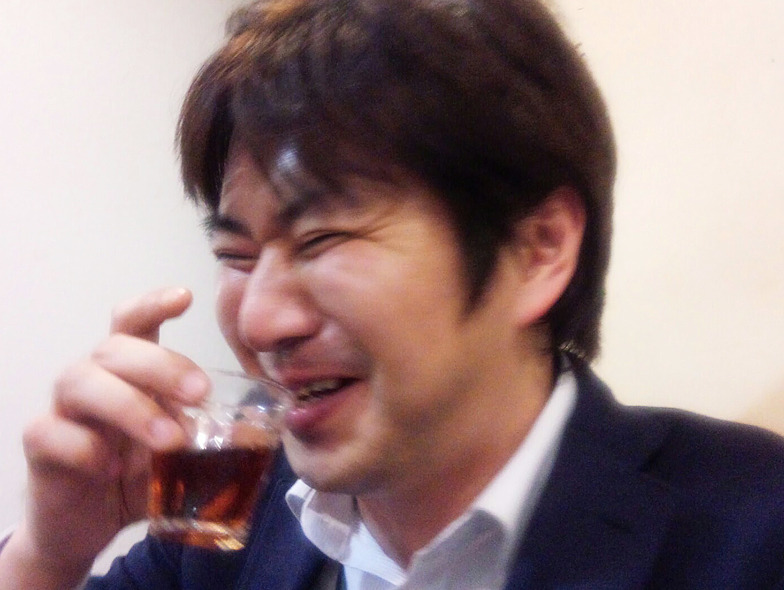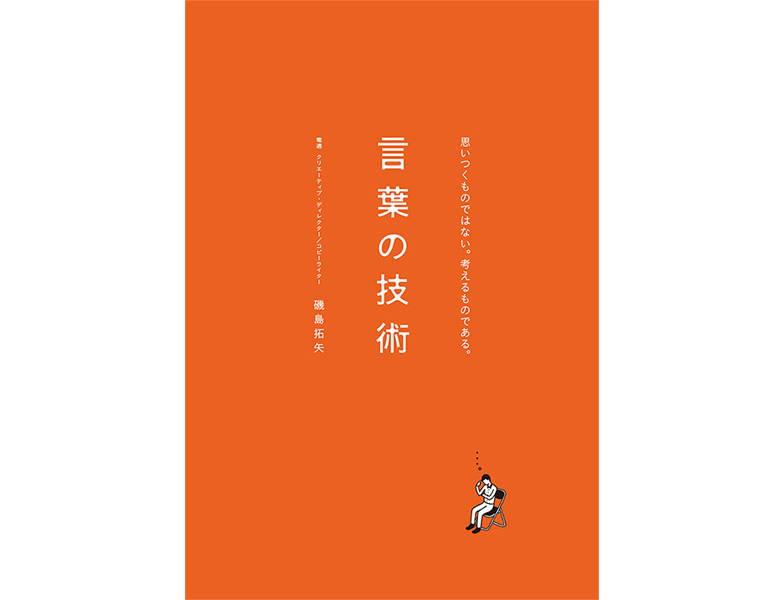
The one doing the octopus dance up front is me. The refreshing one in the back is Mr. Isoshima.
As I mentioned last time, copywriter Takaya Isoshima was my senior in the university club "Stardust." So, whenever I saw him at the office, I felt somewhat embarrassed, and we never had the chance to work together. It wasn't until over ten years after joining the company that we finally collaborated on a competitive presentation for an education industry client.
Back then, I was fairly confident in my role as the strategy person (what ad agencies call "marketing"). I truly believed my job was to distill what the client wanted to do into a single, powerful phrase. To uncover the essence of the services this education company offered, I interviewed everyone involved: the client representative, of course, but also executives, part-time staff, and many others. The "concept" I distilled from these conversations was "Thinking about the power to think."
This concept, which distilled the common ground from everyone's words, was highly praised by the client. It felt like all we needed to do was turn it into an "advertising expression," and we could beat the competition.
Internally, I was brimming with confidence, thinking, "Yamada can pull off this kind of trick now!" and showed this "concept" to Mr. Isoshima. After a brief silence, his response was, "So, how exactly do we communicate this?" We debated extensively, but ultimately, no advertising expression based on this "strategy" was developed, and we lost the competitive pitch. At first, I thought, "We lost because Mr. Isoshima was stubborn!" But as I reflected, I realized that was wrong.

The Connection Between People, Things, and Experiences
What I believed was a "strategy" and a "concept" – "thinking about the power to think" – was neither a strategy nor a concept. Because it didn't illuminate any "for example" facts. And the reason it became that way was because I focused solely on the "things and experiences" provided by companies, without considering how "people" would receive them. My job was to discover new relationships between people and things/experiences, but I didn't do it. I once wrote a rather pretentious column titled "Too Many Fake Concepts," but it turns out I myself was the very creator of those fake concepts.
It's embarrassing. It's sad. This experience became a major turning point for me. Copy isn't necessarily a concept, but I realized that behind great copy, there's always a "searchlight illuminating new relationships between people and things/experiences." And I learned that within the soft (not necessarily logical) way of thinking used to craft copy, there exists a methodology for generating "strategy."
When people think of copywriters, they often focus solely on the technical skill of crafting words. But the real skill—building good relationships with the target audience—is what should be a reference point for many businesspeople. I highly recommend revisiting The Art of Words(Asahi Shimbun Publications).
From the same 'Stardust' circle, Mr. Isoshima, myself, and another junior, Takanori Yano, are all at Dentsu Inc., working hard in DENTSU DIRECT INC. His boarding house near the university was always left unlocked. He was such a laid-back guy that even when friends playfully rearranged his entire room while he was out, he didn't notice for a while.
After work the other day, I met up with Yano for drinks in Yotsuya. This place, famous as a ramen shop, is actually superb as an izakaya too. Potato salad, squid marinated in old rice wine, and plate wonton with Shaoxing wine had us grinning from ear to ear. When I asked, "So, how was Mr. Isoshima's book?", he laughed it off with a huge grin, "Haven't read it! Gahaha!" He's apparently in his tenth year at the company now, but his easygoing personality remains unchanged.

Yano-kun
Well, next time, I'd like to revisit the theme "Advertising Agencies and Marketing," which received quite a bit of feedback the time before last.
Enjoy your meal!






